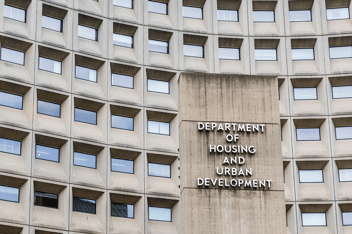How does the proposed demo/dispo rule affect PHAs? Part II
On October 16, 2014, HUD published in the Federal Register a proposed rule on the demolition and disposition of public housing projects, and the conversion of public housing to tenant-based assistance.
The rule has been in the works for quite some time, with the goal of finally bringing the regulations up-to-date with sweeping changes mandated by the Housing and Economic Recovery Act of 2008 (HERA).
Additionally, the proposed rule offers several clarifications and additions regarding resident consultation, application processing, conversion, and other requirements that until now have not made it into regulation.
- Part I: What precisely do the changes entail, and what does this mean for PHAs?
- Part II: Demolition and disposition
- Part III: Conversion
Demolition and disposition
As far as demolition and disposition are concerned, the rule at 24 CFR 970.3(b)(7) would permit, as an exception, the leasing of the entire project only for one year or less for the strictly limited purpose of allowing a prospective owner-entity to show site control in an application for funding for the redevelopment of the project. The rule would also clarify that reconfiguration as an exception to demolition may only be done for an authorized use related to the normal operation of public housing and without demolition.
The regulations as they currently stand, as an exception to the requirement that PHA property generally must be disposed of for fair market value (FMV), allow for the disposition of public housing for less than FMV if there is a commensurate public benefit to the community, the PHA, or the federal government. However, there are no further requirements ensuring the commensurate benefit is actually obtained. The proposed rule would add informational requirements to ensure that commensurate public benefit is actually being obtained for these types of dispositions. Required information would include anticipated future use of the property, a detailed description of any housing to be located on the property, and the length of time the future use would be maintained, among other relevant information.
Regarding application requirements, the proposed rule would require the supporting evidence to include:
- A description of the process of the consultations summarizing the dates, meetings, and issues raised by residents, and the PHA’s responses to those issues
- Meeting sign-in sheets
- Any written comments submitted by affected residents/groups, along with the PHA’s responses to those comments
- Any certifications or other written documentation that the PHA receives from the resident advisory board (RAB) and resident council
In terms of resident relocation made necessary by demo/dispo, the rule would continue to require that the housing being offered must meet housing quality standards (HQS) and be in a location “not less desirable” than the housing the resident is being displaced from, although the existing regulations fail to define what not less desirable means. The proposed rule, on the other hand, would define the “not less desirable” location within the definition of comparable housing, as essentially having comparable access to public transportation, employment, education, childcare, medical services, shopping, etc.
The rule would also strengthen notification requirements, including the obligation to notify in languages other than English.
Finally, the proposed rule would add civil rights requirements, including documentation that the PHA is not in violation of any civil rights law, compliance agreement, settlement agreement, or court order. Certifications would be required that the action does not serve to maintain or increase segregation based on race, ethnicity, or disability. This includes requiring a description of the civil rights-related characteristics of both the residents who will be displaced by the action, the residents anticipated to remain in a public housing project that is partially demolished or disposed of, and the residents on the PHA’s waiting list.
Kaylene Holvenstot has been a technical writer at NMA since 2008. She contributes to and edits NMA Master Books and model policies while researching and analyzing the latest HUD guidance to ensure that all course material is always up to date and fully accurate.

